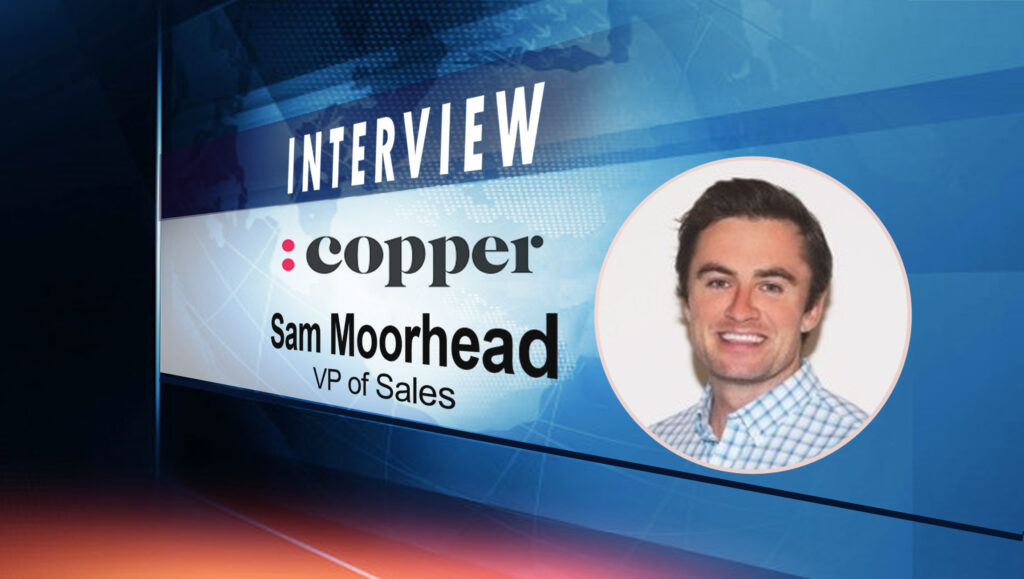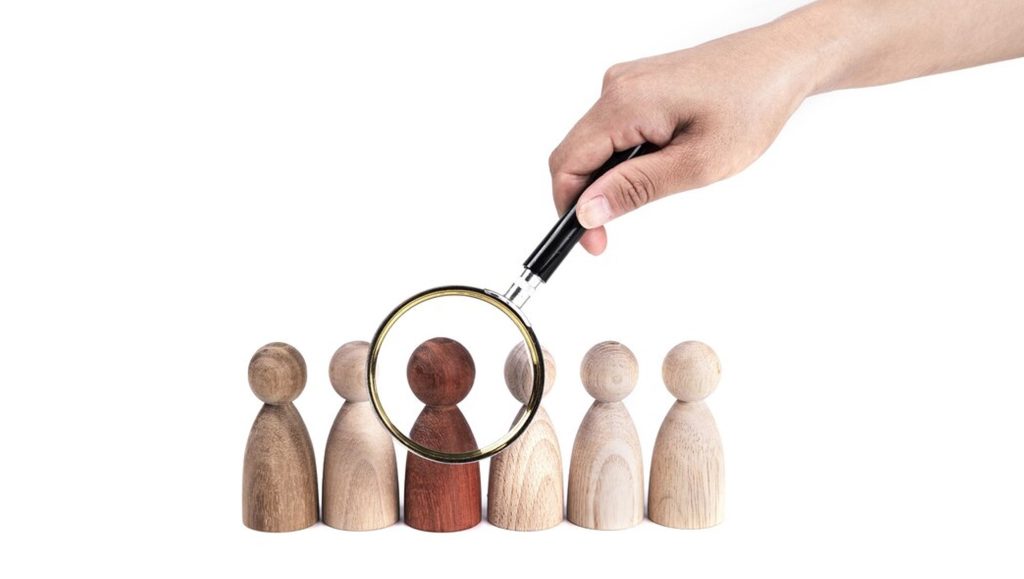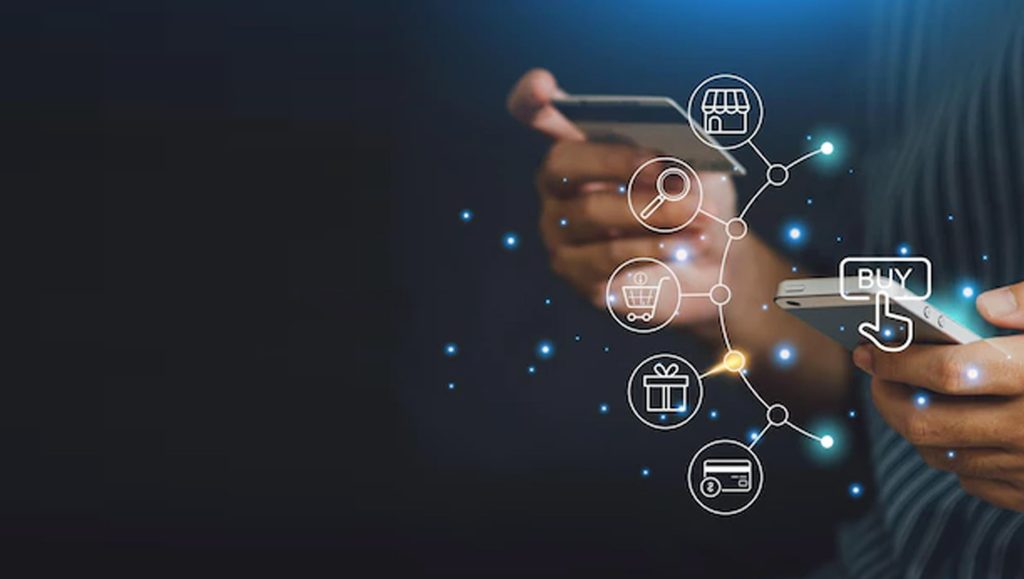Sam Moorhead, VP of Sales at Copper CRM shares a few thoughts on emerging sales processes that are redefining the typical B2B sales environment in this catch up with SalesTechStar:
______
Hi Sam, welcome to this SalesTechSeries chat, tell us more about your journey and more about your new appointment as VP of Sales at Copper CRM?
Like many sales professionals, I found this industry through a few twists and turns. The 2008 financial crisis helped push me from a career in financial services to the world of tech. I started in various marketing roles at a startup called Sonian that was innovatively using the AWS framework for archiving, back when “the cloud” was new and cool. What is it now? Web 3.0? Anyway, I started as a marketer there and deeply believed in the Inbound Marketing movement HubSpot was starting at the time. My only way in was a cold calling role there. Go figure… the inbound marketing company doing cold calling. I loved building momentum for the Inbound movement there where I rose the ranks over ten years and led various small business and mid-market teams across North America and then in EMEA more recently.
I believe the team at Copper is thinking innovatively about the way SMBs on Google Workspace do business today. The market doesn’t want more BOTs; they want tools that provide visibility, organization, simplification and ultimately something that will support building genuine relationships. I’m excited to be joining an incredible executive team and I’m passionate about this relationship movement.
Read More: SalesTechStar Interview With John Giacomini, Senior Vice President Of Sales At North America,…
In your sales journey through the years, what are some of the biggest trends you’ve seen evolve and slowly become game changers?
An obvious one to point out is the growth of video in the sales process. Videoconferencing has been around since before the internet, but SaaS businesses have been pushing the usage of video year after year. It was possible to turn that camera on back in 2010, but nobody seemed to do it. Slowly you started to see the best salespeople turning their cameras on. By 2015 video prospecting really hit the market and was generating enough novelty to get super high response rates. Once the pandemic hit everybody’s camera turned on.
Outside of that, I think buyers today are hyper aware of the SaaS tools that are available. Your prospects know that you have more data on them than ever. They know you saw them open an email or click something on the website. It’s slowly gotten harder and harder to prospect into businesses when there’s no warm introduction or mutual relationship. Word of mouth has just been gaining more and more steam over the years as we get more and more connected.
How do you feel today’s sales leaders need to align the sales process to improve overall ROI? A few tips that you follow?
Establishing a sales process is critical to create the structure that allows your sales professionals to use their energy, brains, and personality to make ROI happen through relationships. Far too many businesses, though, introduce too many rigid steps that make the person on the other end of the zoom really feel like a prospect, and they often make it so complex that a salesperson can’t use their inherent charm because they’ve got so many steps in the playbook to follow. To increase ROI, challenge your business to make the playbook fit on one page, simplify things for your reps, and let them build relationships. (Side note: I like to laminate the 1-page playbook and mail it to salespeople. You can’t put things on people’s desks anymore!)
You’ll need your exit criteria, BANT, GPCT, SPICE, MEDDIC, or whichever lane you choose. However, you can’t expect 2021 buyers to endlessly answer questions without seeing the product, understanding pricing, or seeing some real value from a sales professional. For example, the best discovery process shouldn’t be rigidly forced into only the first 30 mins of the first meeting. It should happen constantly throughout the entire sales process.
I joined a sales call targeted at another sales leader the other day (this happens a lot in the MarTech space). In 2021 sales and marketing leaders at SMB organizations know the game. So don’t be afraid to tell them what your process includes and why you use the framework. “Yea, hey we use SPICE here in our process because it helps us both understand if there is real pain or potential impact, and ultimately helps you make a better business decision.” Leaders need to train salespeople to be transparent about exactly what’s in their sales process and why it’s there to help the person make a better decision.
Pre-pandemic, a lot more sales meetings happened in person. This is really expensive and time consuming to arrive on-site. Now, nearly every business has shifted some or all of their process to the web. The best businesses today are using this opportunity to build more teamwork into their processes. Solutions engineers, customer success professionals, and even execs should be joining more calls. Bringing team members who will be working on the account to a call shows that you care. And the truth is, nobody cares what you know, unless they know that you care. Essentially, in 2022, sales leaders will need to align their sales processes more with genuine relationship building.
And obviously, authentic relationship building also comes with truly knowing your customer. It’s easy to get lost in trying to create sales messaging or materials that speak to the masses, rather than the individual, but to split the difference, sales teams should ensure they’re building ideal customer profiles (ICPs) and grouping their targets into these distinct and separate buckets. These profiles allow sales teams to better target the audiences they want to reach, leading to the creation of more meaningful relationships with prospects and customers, and in turn improving ROI across the board.
Read More: SalesTechStar Interview With Paige Arnof-Fenn, Marketing And Business Growth Head At SavvySME
Can you share some thoughts on what it takes to drive salestech success in B2B today? While at it, a little insight into what your salestech stack usually looks like (and why!).
The key is to make sure your sales team is actually using the stuff you’ve bought. How easy is the tool to use? How many minutes does it take to figure out? Do we need hours of video training? Or can it be plug and play to launch? If It’s something that requires training, it’s critical to get training straight from the source. Linkedin Navigator for example is a great tool, but it’s so often underutilized without consistent training. I like to keep the tech stack as lean as possible and make sure everything is super easy to adopt. Copper is of course a solution I’d recommend for any businesses that use Google Workspace, but as a sales leader, Gong is a tool I couldn’t live without. It delivers instant visibility, coaching functionality, and accountability for the team.
As B2B sales trends evolve, what are some top thoughts and predictions that you have in mind for 2022 and beyond?
The past two years has allowed us all to act a little more empathetic, a little more real, a little more human. Through this, we’re all now craving genuine human connection and relationships. We’re more aware of each other’s challenges. We see through the BS much faster. The tools that support building genuine relationships will win out over the sea of SaaSified AI BOTS that deeply annoy us. Companies with people that care and are willing to spend some time with their customers will drive ROI because people are willing to pay for true support.
As for the go-to-market teams, for many years we’ve seen this convergence of sales, marketing, and customer service in tech. The best marketers will continue to act more and more like salespeople and the best salespeople will continue to act more and more like marketers. There are over 5000 MarTech tools available today and many of them continue to drive this convergence. Great marketers today spend time workshopping with salespeople, diving into the pipeline data or email exchanges in CRM, and even spending time listening to sales calls on Gong to craft positioning statements with front lines reality. Great sales professionals today think like marketers when they set out their plan to achieve quota. They create content on LinkedIn, perfect their video skills as they build personal sales support libraries, and they run campaigns consistently using tools that drip nurture leads for themselves.
In 2022, the most successful companies will create more visibility of their cross-departmental work to create alignment. Salespeople will understand what marketing campaigns went out from the marketing tools in their CRM and marketers will immediately access real-time updates of what’s happening with the pipeline they’ve created in CRM. Onboarding teams will know exactly what’s happened throughout the sales process because they were involved in it.
Additionally, as “The Great Resignation” carries on in 2022, marketing and sales teams will both need to ensure that relationship information is being properly tracked. Not only to protect a team’s point of contact who may abruptly leave a customer’s company, but also because your top sales rep can leave at a moment’s notice. If you don’t have a good understanding of an existing relationship with a customer, that relationship may end up becoming strained when you try to substitute someone new into the mix.
And of course, also thoughts and predictions on the future of salestech?
Tech and AI will have a significant impact on the future of salestech, helping salespeople save time and letting them focus on more strategic tasks and add value to the relationships they form. On top of tech, we will continue to see the sales process become more personalized in 2022 and the years following. Customers have begun to expect an experience tailored to fit their needs, and we will continue to see businesses match this level of personalization, resulting in a better experience the moment a prospect is formed.
Some last thoughts and takeaways before we wrap up?
I greatly appreciate the opportunity to chat with the community here. I think the key to winning in 2022 is being human, transparent about your process, and actually caring about the people you do business with. We’re all starving for more human connection in this world, and we should be using the best tools out there to help facilitate more of it.
Read More: SalesTechStar Interview With Gemma Cipriani-Espineira, Chief Customer Officer At Chili Piper
 Copper is a Google-recommended CRM for Google Workspace users, loved by over 25,000+ businesses globally. Designed for businesses that drive lasting revenue through strong relationships, Copper functions seamlessly in the background so customers can spend time on what matters: people. Headquartered in San Francisco with offices in Toronto, the company has raised $100M in venture capital financing to date.
Copper is a Google-recommended CRM for Google Workspace users, loved by over 25,000+ businesses globally. Designed for businesses that drive lasting revenue through strong relationships, Copper functions seamlessly in the background so customers can spend time on what matters: people. Headquartered in San Francisco with offices in Toronto, the company has raised $100M in venture capital financing to date.
Sam Moorhead is VP of Sales at Copper. Prior to Copper, he spent the last 10 years growing HubSpot’s business, serving in various sales and marketing roles at the company. Moorhead spent the majority of his earlier career in North America, helping develop HubSpot’s small business sales engine, and spent the last two years in Dublin scaling out the company’s mid-market segment in the UK and Ireland.
Missed The Latest Episode of The SalesStar Podcast? Have a quick listen here!
Episode 108: Driving Sales Success with Jeremey Donovan, SVP of Revenue Strategy, SalesLoft
Episode 107: How New Age Technologies Can Drive Better eCommerce Sales with John Bruno, VP of Strategy at PROS
Episode 106: The Need for Predictive Systems in B2B: with Viral Bajaria, CTO and Co-Founder, 6sense





















